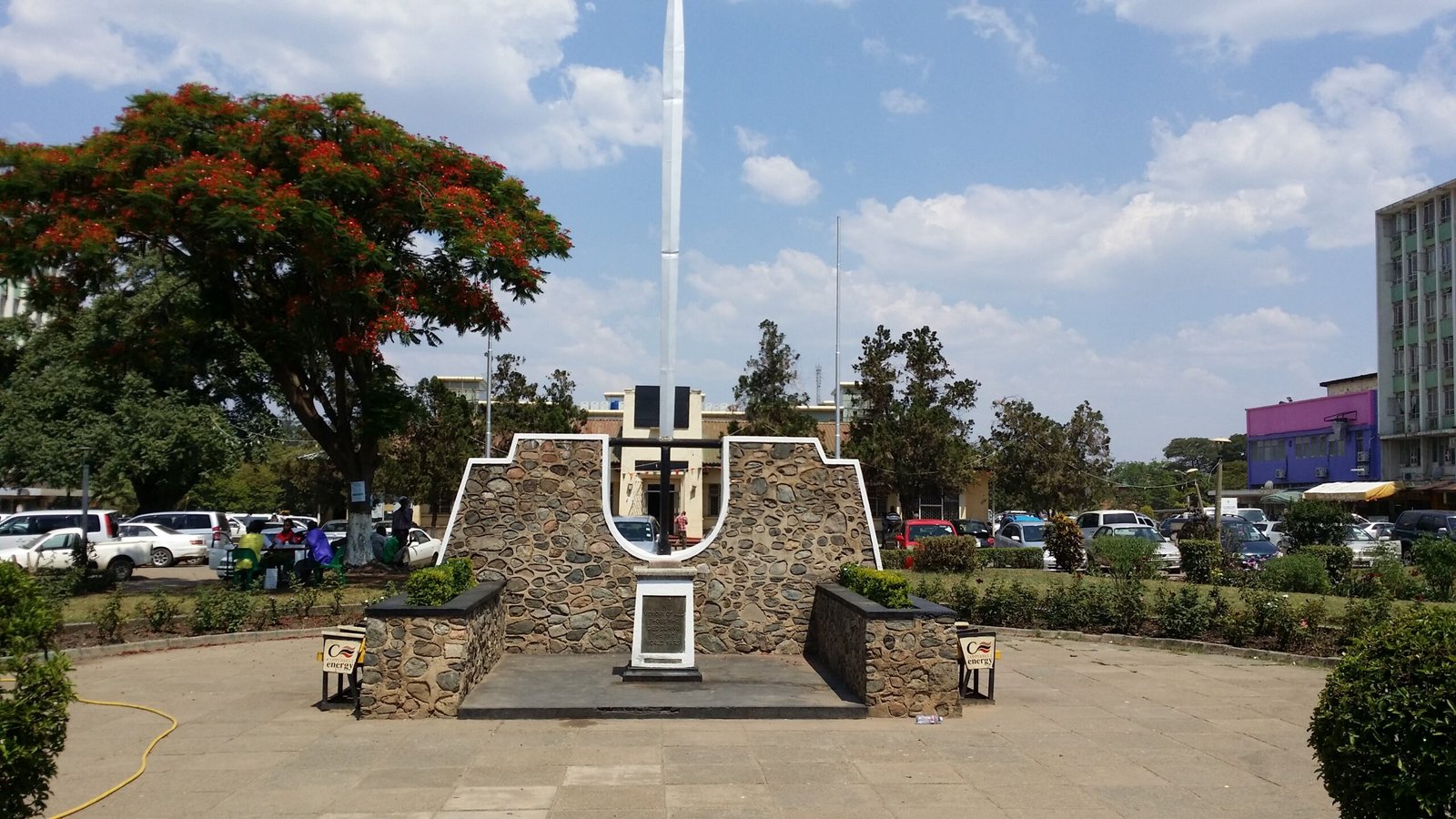An Empty Grave(Cenotaph) at Kaunda Square
There was no Facebook, Twitter or other Social Media, so the civic leaders of Kitwe City Council carved a message in stone in the middle of Kaunda Square(formerly known as Coronation Square). A cenotaph was erected outside the Kitwe Civic Centre when it was still located in what is now the Investment Building. The message urges us to REMEMBER ALL THOSE WHO DIED IN THE TWO WORLD WARS. Zambian soldiers fought and died in both the First and the Second World Wars.
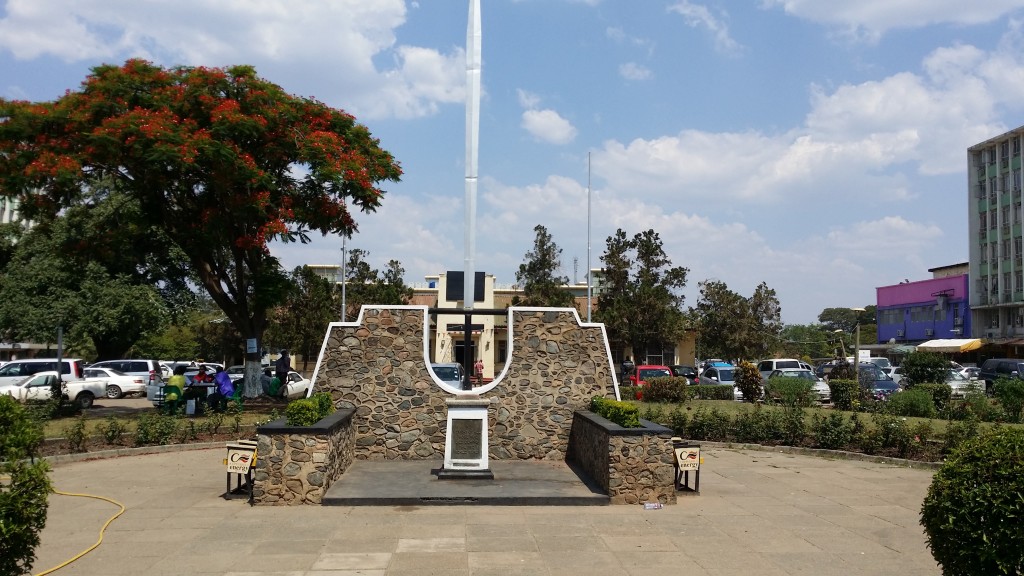
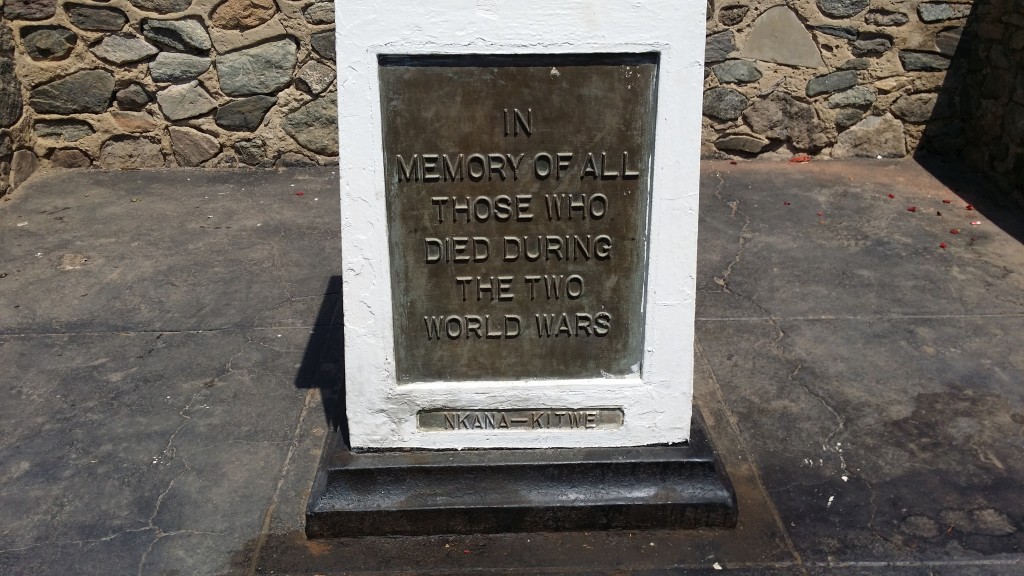
The obvious question is how did we get involved in what were essentially European wars? The answer is well described by a Swahili saying: “Ndovu wawili wakisongana, ziumiazo ni nyika” (When elephants fight, what gets hurt is the grass). To understand how the elephants in Europe affected the grass in far away Africa, we need to get some idea of the prevailing political and economic conditions in 1914 (World War I: 1914 – 1918) and 25 years later (World War II: 1939 – 1945). More on that later.
The second question is why should we bother to remember those who died in the two world wars? The answer is that there are important lessons for the elephant and lessons for the grass that if both learnt and remembered, would help to create a better future for all. The Bemba people have a saying: “Mwikala patalala mwine apatalalika.” (If you want to live in peace, take the initiative to secure the peace). It has been seventy years since the end of the Second World War. Clearly, the world has learnt some lessons from the first two great wars.
The fact that there are still wars going on all over the world would suggest that there are still lessons to be learnt. By remembering what happened and why it happened, remembering the high price that these men and women paid, asking the right questions and collectively seeking effective solutions to problems, we will create a better future for our children. This is why that reminder in stone is important.
The Inscriptions on the War Memorial
One face of the memorial shows the logo of the Northern Rhodesia Regiment. The Regiment consisted of black and white soldiers initially derived from the Northern Rhodesia Police Force. It was formed in 1933. Its motto was “Diversi genere fide pares” (Different in Race, Equal in Fidelity). Its engagements saw the soldiers fighting in Africa, Middle East and Far East (Burma).
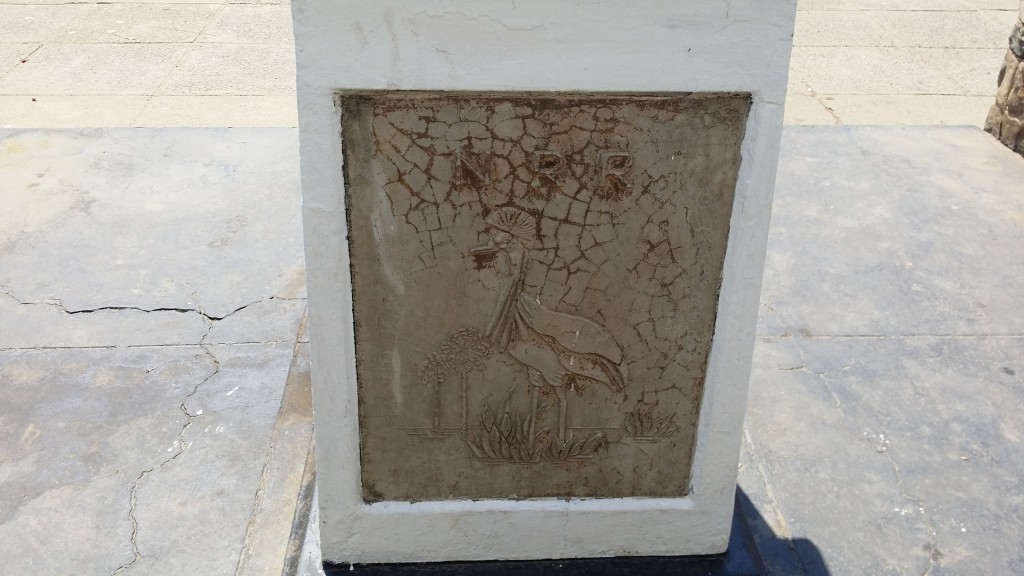

The logo shows a gold crested crane above the inscription.
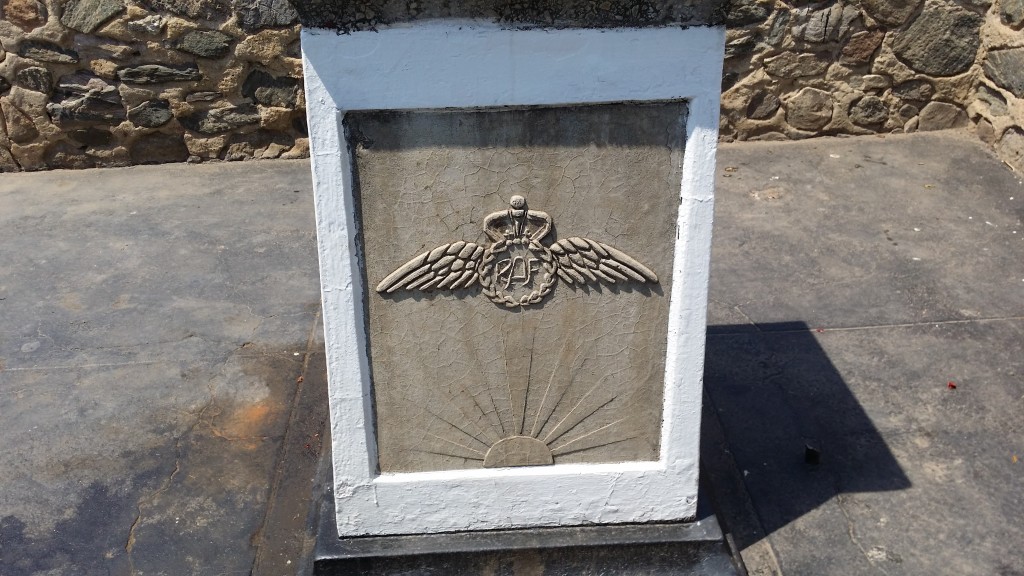
Another face of the shows the logo of the Royal Air Force. It features the eagle, a circle and a crown illuminated by the sun’s rays.

The other side shows the Royal Navy insignia showing an anchor and a rope over sea waves.
World War I
The European Power Struggles Back Story
Scholars still debate the complex issues and circumstances that culminated in World War I.
In 1914, historical tensions were high between European countries that had formed alliances where Britain, Russia, France and Serbia were on one side (The Allies) while Germany, Italy and Austro-Hungary formed a competing group. They differed on territorial and political matters. Each group aimed to gain economic dominance by their imperial expansion and exploitation of material wealth in their colonies around the world. Some of the politicians even sought to gain an advantage in domestic politics by engaging in a foreign war.
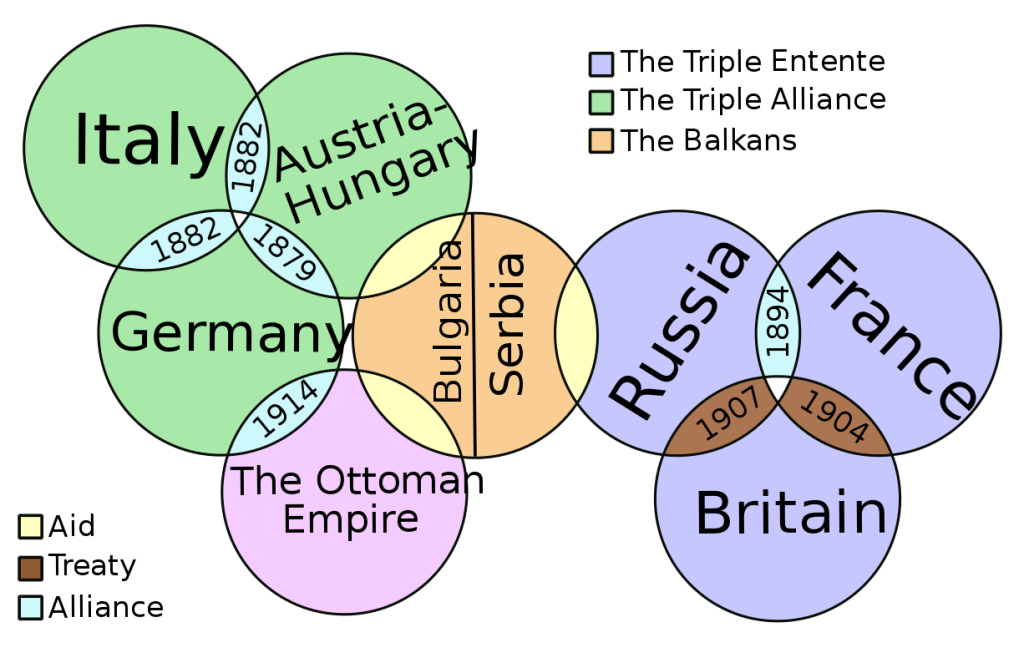
European military alliances (Source: Wikipedia.org)
The Spark That Started World War I
On June 28, 1914, the heir to the Austro-Hungarian throne (Archduke Franz Ferdinand) and his wife Sophie were assassinated by a secret Serbian organisation when he visited Serbia. Austro-Hungary accused Serbia and declared war on her. Each side called on its allies and they agreed to join in the war that ensued.
America stayed out until 1917 when the war started threatened trade shipping routes and Allies trade partners.
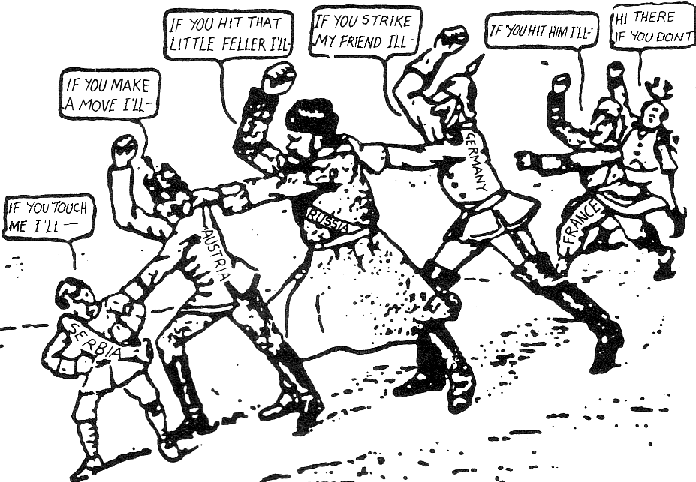
How Africa Got Involved
Strategic Location
Europe got its supplies of cotton, tea, steel, horses, and other essentials from their colonies in Africa, New Zealand , Australia and Indian sub-continent. Merchant ships sailed around the Cape of Good Hope in South Africa to and from Europe. Locals were conscripted into the police force and army to protect these business interests.
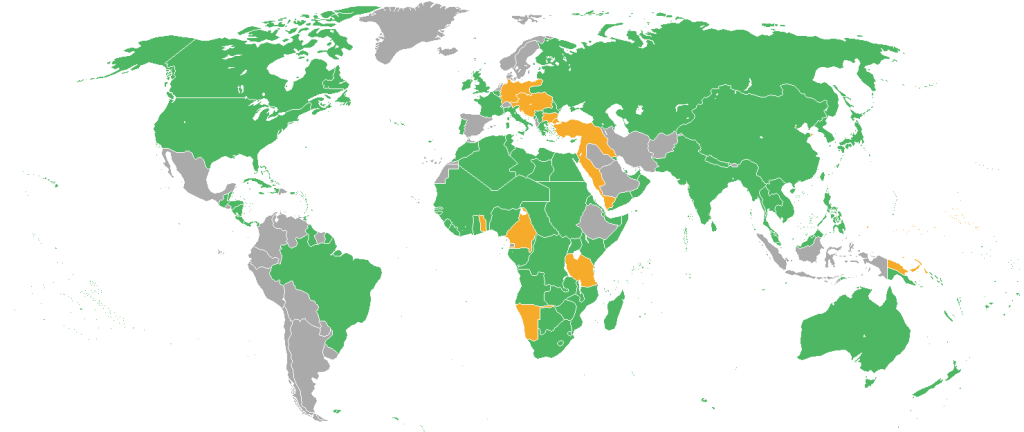
Map of the world with the participants in World War I in 1917. Allies are in green, the Central Powers in orange and neutral countries in grey. (Source: Wikipedia.org)
German colonies in Africa included Togo, Cameroon, Namibia and Tanzania.
In West Africa, Germany had a long range communications post in Togo (Kamina Wireless Station) that linked all its African colonies to Germany and South America. Togo thus became a prime military target for Britain and her Allies at the onset of World War I. That is how Togo became the scene of the first fighting in WW1.
Germany had other wireless transmitting stations at Luderitz Bay, Windhoek(in Namibia) , Duala(Cameron) and Dar-es-Salaam(Tanzania) in Africa. The Allies targeted these communication posts early in the war as a matter of priority.
Zambia’s Involvement
Source of Raw Materials
In the 1890s, Zambia’s mineral wealth attracted the attention of Cecil John Rhodes who was looking to increase the profits of the British South Africa Company, of which he was the founder and Managing Director. He made deals with local chiefs where they would allow him to mine their mineral wealth in exchange for British Protection. The company controlled the territory that came to bear his name: Northern Rhodesia.
As each European side sought to build itself into a stronger world power, Africa was seen as a strategic logistic to secure and exploit. What had been simple police forces meant to maintain civil obedience became transformed into local armies that engaged in local and foreign war missions.
It is estimated that there were more than thirty seven million casualties of WW I. It is estimated that 2,000 Zambians(Northern Rhodesia) died in the War.
The League of Nations was formed to safeguard the welfare of member states from being subjected to military and economic hardship by another country. It was hoped that it would be able to prevent another great war.
World War II
World War II had its roots in WW I. At the end of WW I, Germany and Austro-Hungary were blamed for starting the War. After the War, the Big Four (England, United States, Italy and France) made the defeated Germans sign the Treaty of Versailles. The Treaty required that Germany should
- Accept reponsibility for starting WW I
- Give back land grabbed from its neighbours
- Pay monetary compensation for the damage caused by the War
- Promise not to build up its army into a big force.
In 1933, following the economic hardships of the The Great Depression of the 1920s and inspired by Mussolini’s military style rule in Italy, Adolf Hitler took advantage of the unhappy mood of many German people and promised that he would ease Germany’s difficulties by ignoring the Treaty and doing what he thought was best for the German people who he considered to be a master race. He singled out the Jewish people as being responsible for bringing about the economic down turn of Germany.
Hitler secretly built up his army and started taking over neighbouring countries. The League of Nations did not stop him. His incursion into Poland led to action by Britain and France who in turn declared war on Germany.
It is estimated that over fifty million people died in WW II.
Zambia’s Involvement in WW II
Soldiers from Northern Rhodesia fought in WW II in Somalia, Abyssinia, Madagascar, Burma, India and Palestine as part of the British empire forces.
Other Zambian War Memorials are located in Ndola, Mbala(Abercon), Nakonde, Chambeshi (Mpika-Kasama Road), Lusaka and Livingstone.
In order to remember, we must first learn what happened. The Kitwe War Memorial is our constant reminder of these events and the importance of drawing the lessons that will help to prevent future wars.
___________
More details can be obtained from
Ex-Servicemen’s League of Zambia
National HQ Burma Memorial Hall
Burma Barracks
P.O.Box 50374
Lusaka
Tel. 258937
Royal Commonwealth Ex-Services League
Haig House
199 Borough High Street
London
SE1 1AA
United Kingdom
Telephone:
+44 (0)20 3207 2413.
______
Do you know of any stories of World War veterans? Share your story with us. Leave a comment below or email us.
